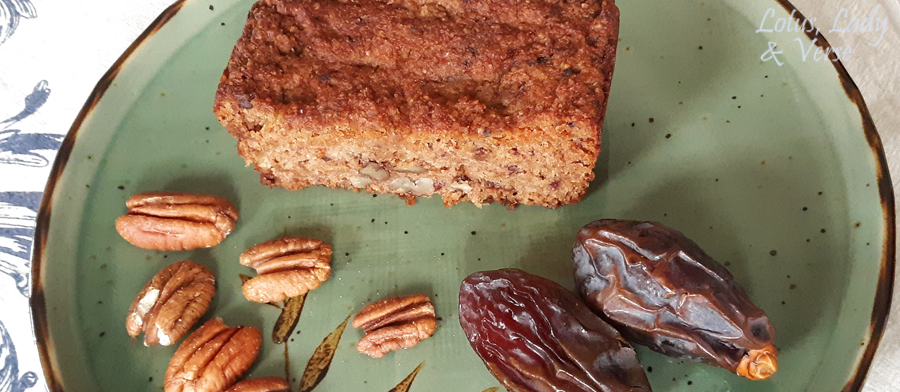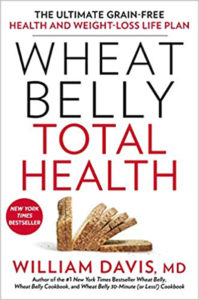Like no other time of year, spring promises so much! The season’s energy encourages creativity in almost any endeavor. Effectively upgrading your condition or supporting a flourishing state of health can be tricky. Creating your own version of a gluten-free diet is part of the process. Read up on gluten-free diets, too.
Kitchen Creativity

I made this vegan version of a quick bread recipe from Wheat Belly Cookbook, by William Davis, M.D.
Creativity in the kitchen, especially when it comes to cooking and eating is where our choices make bold statements about us—personally, culturally, and economically.
Are we paying attention to these messages? They speak volumes to us, if we’re listening with intention. But, you ask, why would I want to review choices already made? Isn’t that counter-productive?
Time to Reassess
Well, for one thing, anytime distress or the range of discomforts we can feel after a meal seem to be recurring or chronic, it’s time to reassess.
In my case, I recently noticed more digestive distress than usual. It was a familiar discomfort, but was occurring so often that I thought there must be a message there for me. Somewhere.
After ruminating over why I felt sick so often, I made a guess. I must have been eating too much wheat! Wheat, as a “nutrient” was inside most every morsel that had gone into my mouth. For years!
And so, as luck would have it, I chanced upon a way to investigate the source of my problems. It happened quickly. Within the space of one week, I regained normal digestion. How’s that for fast turn-around?!
Wheat as Protein
Although the word gluten is used to convey the idea of grain protein, I never expected my wheat consumption to represent the protein in my diet. But actually that’s what it was doing there, all along.
“For years”—for a rather long time—in fact all of my vegetarian life, I had been consuming wheat in the form of pasta, bread, cereal, baked sweets and other snacks. Wheat, especially as a whole grain, would be no problem, do you agree? We expect these food items to contain wheat.
But what about the vegetarian protein that I had ingested? I would say that outside of simple tofu, all the other protein foods I ate for many years were built from wheat gluten plus other forms of wheat as well. Wheat-wheat-wheat all the way. Likely ‘way more than my body needed. An extreme over-load! Perhaps, I mused, whatever turmoil the wheat habit raised in my system, my body finally had enough and was crying foul. Unrelentingly.
The best thing is change
Many times, the best things in life are associated with change. My recent switch away from gluten and wheat helped me figure out what to eat, how to cook it, and that I don’t need to wheat proteins to thrive.
It takes a bit of sleuthing and loads of trials to find the right combination of foods, but that’s no big deal. I kind of like the challenge!
For you, my dear reader, I want to declare that the post is about my own experience. And my opinion that, making a dietary change such as eliminating wheat as a food or staple, resulted in some very positive trade-offs. No matter what else I loose by shunning wheat baked goods, wheat protein, etc., in my diet, sometimes the better thing is just to forego it entirely!
The Backstory to Making Dietary Changes
I realize that what works for one person, doesn’t necessarily happen for another. However, for your consideration, I offer this backstory.
Over the past 20 years or so, lots of press about going gluten-free was fueled by the food industry with its gluten-free products, and cookbook writers whose recipes we tried. The Atkins Diet may have been first in a line of adventurous and outspoken proponents of extreme diets. In fact, your interest in this area will find you amongst the popular diets—like The Atkins Diet—as well fads, cookbooks and explanatory texts galore. See this article for a full explanation.
Why was the public interested in gluten-free diets? The regular American Diet was making people sick, despite dietary suggestions that seemed to make sense. And people do want pain-free lives. Once gluten was identified as a maligner protein, people were still hungry for baked goods. Thus the marketplace took up the challenge to replace gluten, to switch to a similar food product that could be made to look like baked goods and deliver on taste.
Gluten-free is synonymous with high-carbohydrate in many gluten-free products you can purchase.
Keeping that in mind helps. Especially when you are writing your grocery list for a low profile with sweets.
Research on Wheat as Food
 Much of what makes sense to me comes out of the concise words and research of cardiologist and author William Davis’s Wheat Belly Total Health published by Rodale Press, 2014. (I missed his first book, titled simply, Wheat Belly, published in 2011. He’s written others as well.). His works describe the range of problems a wheat-filled diet is likely to cause.
Much of what makes sense to me comes out of the concise words and research of cardiologist and author William Davis’s Wheat Belly Total Health published by Rodale Press, 2014. (I missed his first book, titled simply, Wheat Belly, published in 2011. He’s written others as well.). His works describe the range of problems a wheat-filled diet is likely to cause.
I could see something of my own state of health in the pages of Wheat Belly, Total Health. And when my personal experience is confirmed by the explanation of an expert, I tend to pay attention.
Of course, I read the chapters closely that seemed to speak to my personal afflictions. I found that reading about how the body processes grains and sugars, and endocrine and thyroid hormones and enzymes a bit complex but actually less daunting than I’d imagined.
Expected Outcomes of Wheat-free
Davis describes wheat proteins as cause of many health conditions. Such conditions are vitamin deficiencies, disturbances in human gut flora, disruptions in hormonal function, heart disease, dementia, asthma, allergies, skin eruptions, brain effects, and more.
Further, Davis considers non-glutenous grains harmful. Why? Because they contain more starch, or carbohydrates, than other nutrients. These non-healthy grains can raise blood sugar much higher than the person consuming them would have guessed.
But what I find interesting is, no matter what label you put on a condition, toxicity, a specific underlying situation applicable to many syndromes, is a rather compelling argument for going wheat-free.
A popular topic, weight loss is analyzed for outcomes you can expect when going wheat-free. Most likely, weight will come off without hesitation. But, he says, certain conditions where damage has occurred might require extra help in the form of an assessment (by a medical doctor) especially when the condition caused by grain exposure has destroyed bodily tissues or functions.
Two Messages
In Wheat Belly Total Health, two messages are unmistakable. One is that wheat and grains in general are not good for human consumption. And the second one is that watching sugar intake is vital for brain and heart health.
Taken together, the main messages are not totally different from the advice that you stay away from a high-carbohydrate diet. And the underlying suggestion of limiting sugar, bananas and dried fruits chopped into grain-free baked goods, is typical functional medicine advice these days.
Healthy Without Grains
The distinction that Davis always makes is that grains as a food group—all of them—must be eliminated in order to truly regain health. In other words, more complete reversal of injurious health conditions is possible if you go grain-free.
This directive is the most ambitious. Forget about the habits and addictive behaviors that just wheat create. Going grain-free, not just gluten-free, but agreeing to eliminate all grains, is really challenging. In fact, I used to fantasize about a Paleo diet on vegan terms. But a grain-free diet would be nearly impossible for me unless I became a carnivore.
Grain-free means that your source of protein and dietary life-sustenance must come from either meat and eggs plus dairy, or in the case of a vegan diet, from very discerning combinations of nuts, seeds, tofu, organic produce and vegetables, herbs and spices, etc. that are likely to elude customary selection, and be rather expensive at that.
Davis proposes a meats-and-eggs diet, supplemented fish oil, nuts, seeds, and olive and avocado oil. Of course you should have all the non-starchy vegetables, too (I’m only mentioning some of the foods, not a complete list here).
And that’s fine for him, but for those of us not interested in challenging a vegetarian lifestyle, it may be harder to achieve than just excluding wheat.
Yet, if you’re suffering from unfavorable health conditions, an autoimmune condition, high cortisol, thyroid or endocrine-related problems, and others, you might give this book a read.
Diet Ideas are Grain-free
These grain-free diet ideas are imaginable—you just have to stretch your imagination and research the chefs who have good intent in this genre of dining.
Even though Davis’ idea of the perfect diet is off-bounds for me, I distilled enough of the wheat-as-bad-protein idea to be creative in the kitchen.
In fact, the image of “Date-Nut Quick Bread”, above, is of a veganized version of Davis’ recipe in another of his books, Wheat Belly Cookbook.
I’m suggesting, dear reader, that you have your own creative response to this challenge. Especially if you, like me, are vegetarian or vegan, but aspire to go grain-free. I would go and completely alter my present diet to enjoy good digestion and to experience a healthier version of myself. Wouldn’t you?
Doesn’t gluten-free pique your interest, or at least curiosity, to find out more? If nothing else, it may be your first attempt at glimpsing the world of grains produced here in the West. Food, as we call it in these times of food production, is the product of many processes—the pieces of a business proposition, and not necessarily a healthy one at that.



